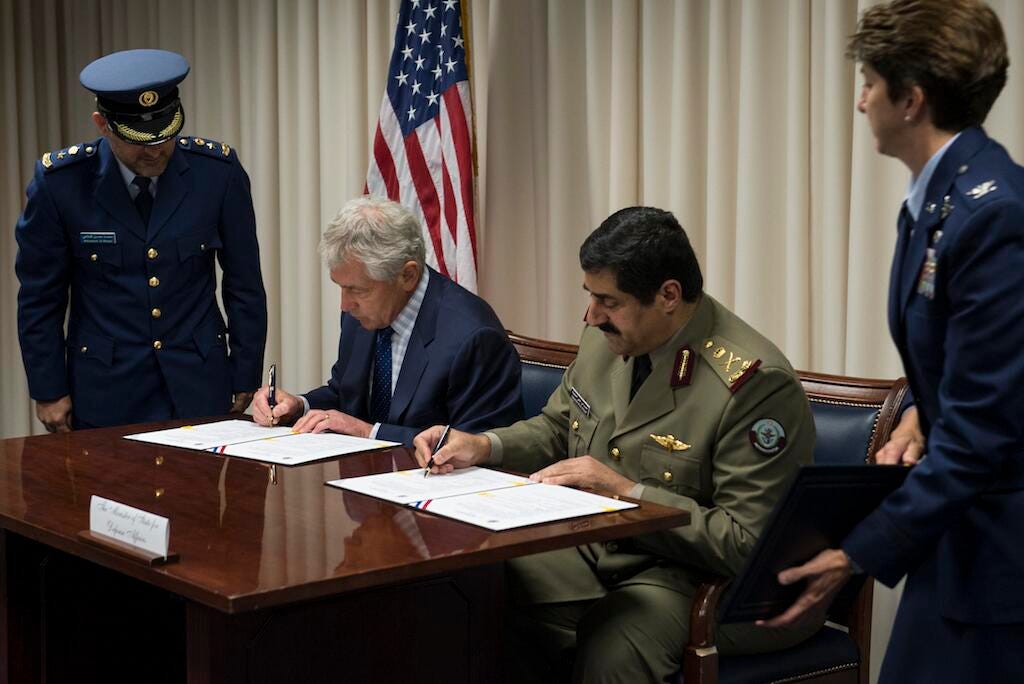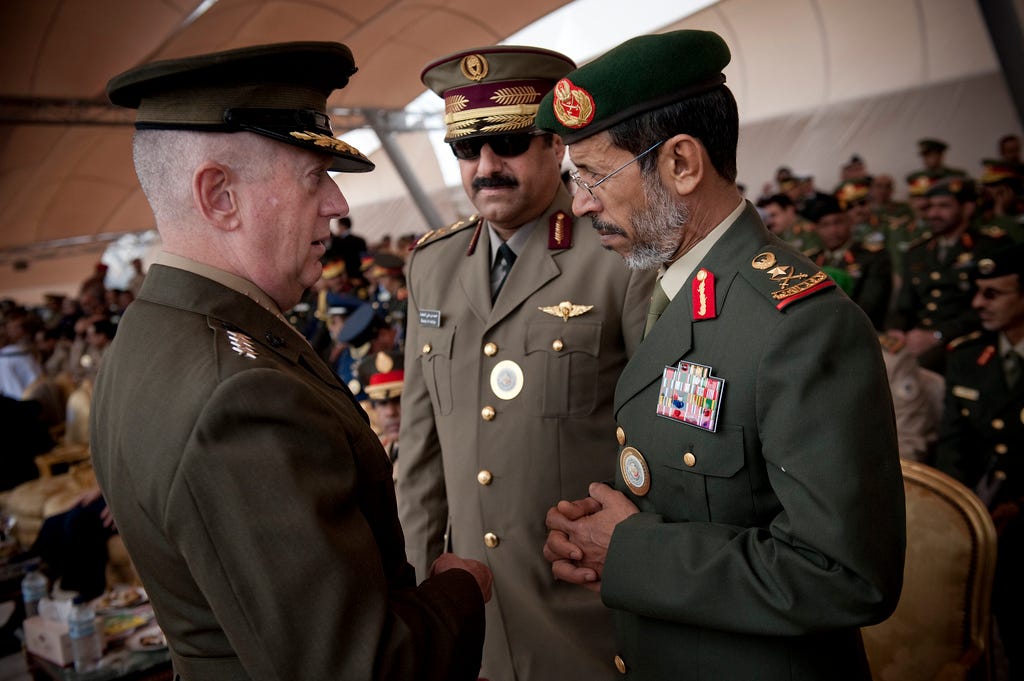America just approved an $11-billion arms sale to Qatar. U.S. Secretary of Defense Chuck Hagel and Qatar Minister of State for Defense Affairs Hamad bin Ali Al Attiyah signed the agreement at the Pentagon on July 11.
It’s the largest arms sale of 2014 so far—by a wide margin.
The deal includes 24 Apache helicopters, 358 Patriot missiles and 500 Javelin anti-tank rockets. That’s a lot of firepower for the tiny country. But it’s hardly surprising. Qatar has spent billions of dollars on weapons in the last five years … and America has happily indulged this spending habit.
Qatar occupies a small peninsula in the Persian Gulf with a total area of around 4,500 square miles—about the same area as Connecticut. The population totals two million people, fewer than 300,000 of whom are native Qataris.
 Twenty-four Apaches and hundreds of Patriot missiles is a Hell of a lot of firepower to protect such a tiny country.
Twenty-four Apaches and hundreds of Patriot missiles is a Hell of a lot of firepower to protect such a tiny country.
The deal goes down. Defense Department photo
Back in 2012, Qatar spent $406 million on American rocket launchers and Humvees, $137 million on Hellfire missiles and $6.5 billion on high-altitiude missile-defense systems.
The kingdom’s wish-list is even longer. More than once, American legislators have rebuffed Qatar’s attempts to purchase Blackhawk and Apache helicopters. What the tiny but wealthy kingdom can’t get from America, it seeks from other countries. Qatar recently asked Germany to unload 200 Leopard tanks.
Qatar’s military spending increased after the Arab Spring and really swelled in 2012. Which makes sense. Qatar is a super-rich country, but a very small percentage of the population controls all of its oil wealth.
 The reports of abuse suffered by migrant workers in the run-up to Qatar’s hosting of the 2022 World Cup is a disturbing example of native Qataris’ disconnect from the other 75 percent of the population. It’s possible that Qatar’s leadership is hedging against an armed uprising.
The reports of abuse suffered by migrant workers in the run-up to Qatar’s hosting of the 2022 World Cup is a disturbing example of native Qataris’ disconnect from the other 75 percent of the population. It’s possible that Qatar’s leadership is hedging against an armed uprising.
Marine Corps general James Mattis meets with Qatari Lt. Gen. Hamad Bin Ali Al Attiah in 2011. Defense Department photo
America’s interest is clear in selling that much firepower to Qatar. The kingdom is just across the Persian Gulf from Iran. To Washington, a well-armed Qatar helps to contain Tehran.
Back in the 1990s, Qatar invested a billion dollars in its Al Udeid air base. At the time, Qatar barely even had an air force. Since then, the Pentagon has used the base as a hub for the war in Afghanistan. Nearby As Sayliyah hosts U.S. Central Command.
Qatar is pretty important to America’s continued interest in the region.
It’s also not the only Middle East country the U.S. is bolstering. The same day as the Qatar deal, the Pentagon proposed selling Sidewinder air-to-air missiles to Israel. The U.S. has also provided millions inadvanced equipment to Iraq. In 2010, Washington inked a $60-billion arms deal with Saudi Arabia.
Other world powers are arming the region, as well. Russia offered $2 billion worth of weaponry to Egypt in February. Turkey has hired a Chinese company to construct its missile-defense system.
$11 billion is a lot of money. It’s also business as usual. The world’s arms manufacturers are thriving in the Middle East.
No comments:
Post a Comment